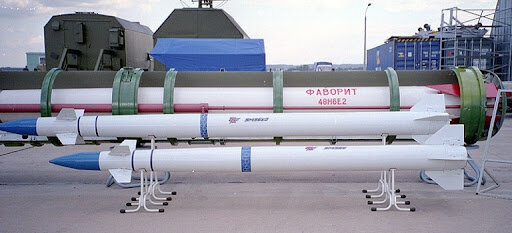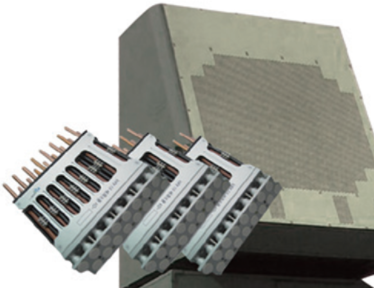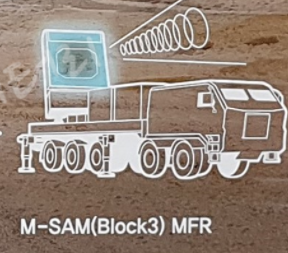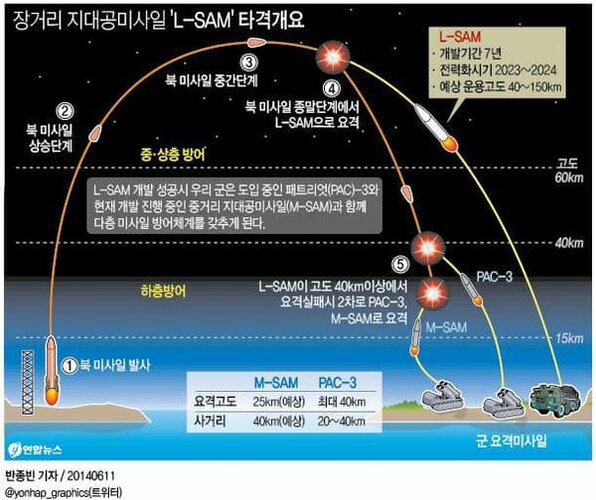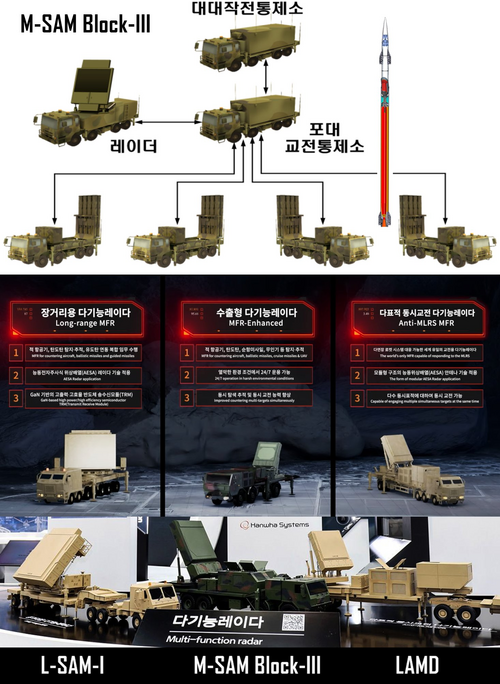You are using an out of date browser. It may not display this or other websites correctly.
You should upgrade or use an alternative browser.
You should upgrade or use an alternative browser.
South Korean Air and Missile Defence systems
- Thread starter NMaude
- Start date
bring_it_on
I really should change my personal text
- Joined
- 4 July 2013
- Messages
- 3,231
- Reaction score
- 2,587
Is the Korean system fully indigenous?
I believe the missile was designed with Russian assistance but I could be wrong.
Correct - the Sth Koreans had Russian support (Almaz-Antey) - it's essentially a variant of the Russian 9M96 missile used in the S-400 system:
I believe the missile was designed with Russian assistance but I could be wrong.
Cheolmae II / Cheongung (Iron Hawk) M-SAM Medium Surface to Air Missile
So a South Korean version of the SA-21 Growler.it's essentially a variant of the Russian 9M96 missile used in the S-400 system:
Well that is what the S-400 Triumf is...So a South Korean version of the SA-21 Growler.
Korean SAM is a cousine of S-350 Vityaz.So a South Korean version of the SA-21 Growler.it's essentially a variant of the Russian 9M96 missile used in the S-400 system:

South Korea Unveils Plan to Improve Defenses | AIN
Better theater situational awareness, expanded missile defenses, armed UAVs and a light aircraft carrier are on Seoul’s shopping list.
So still a variation of the SA-21 Growler missile.Korean SAM is a cousine of S-350 Vityaz.So a South Korean version of the SA-21 Growler.it's essentially a variant of the Russian 9M96 missile used in the S-400 system:

South Korea Unveils Plan to Improve Defenses | AIN
Better theater situational awareness, expanded missile defenses, armed UAVs and a light aircraft carrier are on Seoul’s shopping list.www.ainonline.com
Or S-350 is the variant of KM-SAM if you will. ADD calls it a joint development between Russia and Korea. It wasn't a unilateral deal, mind you.So still a variation of the SA-21 Growler missile.Korean SAM is a cousine of S-350 Vityaz.So a South Korean version of the SA-21 Growler.it's essentially a variant of the Russian 9M96 missile used in the S-400 system:

South Korea Unveils Plan to Improve Defenses | AIN
Better theater situational awareness, expanded missile defenses, armed UAVs and a light aircraft carrier are on Seoul’s shopping list.www.ainonline.com
Obviously the Koreans had much more to gain technically from the Russians regarding various SAM related experties, most noticeably shown by the cold-launching technique. On the other hand there were Korean techs that were shared with the Russians as well, which helped building the fundamentals of S-350, for example the technolgies regarding semiconductor manufacturing and testing or other digital related stuff.
So its rather unapropriate to call one a variant of another but they are more of a half-sibling.
Anyways, sorry for derailing once more. Back to the topic.
Thank you very much, Moderator!
Nearly the same story happened to Korean KSLV-1 rocket that used as its 1st stage URM-1 developed for Angara rockets family but performed its maiden flight years before Angara-1.2PP flew for the first time. Sometimes the talent need the expirience to make things easier and faster to achieve.
Well...i didn't mean to start the dispute - who id the older brother.)) But, despite the fact i count Koreans as incredibly talented nation with a great capabalities in electronic technologies, it was A-A who developed KM-SAM base architecture and built the first three prototypes of its multifunctional radar, of course with the usage of Korean electonic components as it was one of the contract requirements, for the obvious reason. But it took for A-A nearly ten years more to develop S-350, coz its max kill-range required by Russian MoD was three times larger than it was for KM-SAM.Or S-350 is the variant of KM-SAM if you will.
Nearly the same story happened to Korean KSLV-1 rocket that used as its 1st stage URM-1 developed for Angara rockets family but performed its maiden flight years before Angara-1.2PP flew for the first time. Sometimes the talent need the expirience to make things easier and faster to achieve.
I'm not disputing that either and that's why I've said, although I've put it really vaguely, that the Koreans had "much more to gain". and it's not a secret either when comparing Korean expertise concerning SAM technology to the Russian one, especially considering the wider gap of when the KM-SAM development took place.it was A-A who developed KM-SAM base architecture and built the first three prototypes of its multifunctional radar
Though there are also thing's I need to clarify as well such as the structural difference of the missile. For example, although the ACS is technically based on what the Russian provided with ToT, the actual design resembles more of that of PAC. Same story aith the warhead. and other missile components.
Also as you've put it, A-A was the one who designed the base architecture but those who actually realized that base architecture and built the engineering model of the SAM system were the likes of ST, LG and LIG N1.
Setting aside the chronological order, I was also agreeing with you on that the KM-SAM and S-350 are like cousines, or more appropriately, as I've put, half-sibblings.
What I had to and was trying to dispute was NMaude's claim of KM-SAM being SA-21 variant, though I've failed on that side by writing a mess of a reply. Anyways, now I have clarified myself enough I feel.
Ps. I don't think the KSLV-1 analogy is completly fitting in this case considering the fact that KSLV-1 1st stage was almost entirely designed and built, if not entirely, by Russians. It's a similar situation but there are clear differences in detail imo.
Marcellogo
ACCESS: Restricted
- Joined
- 27 September 2021
- Messages
- 37
- Reaction score
- 39
More than just missiles we should look at the radar and other components of the system to understand not just the difference between the two versions but what advantages the Vityaz would give to Russian when compared to older systems (and S-400 itself).
For what I have seen it is not just about having lighter and more compact launchers but radars and ARH missiles integration aimed at dealing with a series of new gen threats that older S-300S would have difficulty to deal with.
Above all it is the capacity against saturation attacks with Cruise missiles and stand off weapons to be the main focus, with stated capacity for a single unit to deal with 16 targets and to control 32 missiles ad once.
The presence of 9M100 missiles means that the single fire units would be able to self defend, unlike the S-400 that relies on Pantsir.
So, i would imagine such a system is focused into defending big cities (Damascus spring to mind) and important logistical and transport nodes from direct hits leaving to S-400 (and in future S-500) the engagement of the launcher platforms themselves (and the tankers and AWACS planes supporting them).
At the same moment presence of a 120km range version of the missile with ARH guidance would in any case allow to engage tactical stealth planes like the F-35 at enough distance to oblige them to use stand off weapon anyway (i.e. greatly reducing their own payload in doing this)
For what I have seen it is not just about having lighter and more compact launchers but radars and ARH missiles integration aimed at dealing with a series of new gen threats that older S-300S would have difficulty to deal with.
Above all it is the capacity against saturation attacks with Cruise missiles and stand off weapons to be the main focus, with stated capacity for a single unit to deal with 16 targets and to control 32 missiles ad once.
The presence of 9M100 missiles means that the single fire units would be able to self defend, unlike the S-400 that relies on Pantsir.
So, i would imagine such a system is focused into defending big cities (Damascus spring to mind) and important logistical and transport nodes from direct hits leaving to S-400 (and in future S-500) the engagement of the launcher platforms themselves (and the tankers and AWACS planes supporting them).
At the same moment presence of a 120km range version of the missile with ARH guidance would in any case allow to engage tactical stealth planes like the F-35 at enough distance to oblige them to use stand off weapon anyway (i.e. greatly reducing their own payload in doing this)
aonestudio
I really should change my personal text
- Joined
- 11 March 2018
- Messages
- 2,863
- Reaction score
- 7,047

South Korea Reportedly Tests L-SAM Interceptor - MOENCH PUBLISHING GROUP
Separate Interceptors for Aircraft and Ballistic Missile Targets
 monch.com
monch.com
Forest Green
ACCESS: Above Top Secret
- Joined
- 11 June 2019
- Messages
- 7,831
- Reaction score
- 13,218
aonestudio
I really should change my personal text
- Joined
- 11 March 2018
- Messages
- 2,863
- Reaction score
- 7,047

(LEAD) S. Korea succeeds in L-SAM missile intercepting test: military | Yonhap News Agency
(ATTN: UPDATES with plan for anti-drone jammer development in last 2 paras) SEOUL, Nov. ...
Forest Green
ACCESS: Above Top Secret
- Joined
- 11 June 2019
- Messages
- 7,831
- Reaction score
- 13,218

South Korea’s New Anti-Ballistic Missile System Downs Targets In Tests
The announcement of the successful interception of target missiles comes hot on the heels of a spate of missile tests by North Korea.
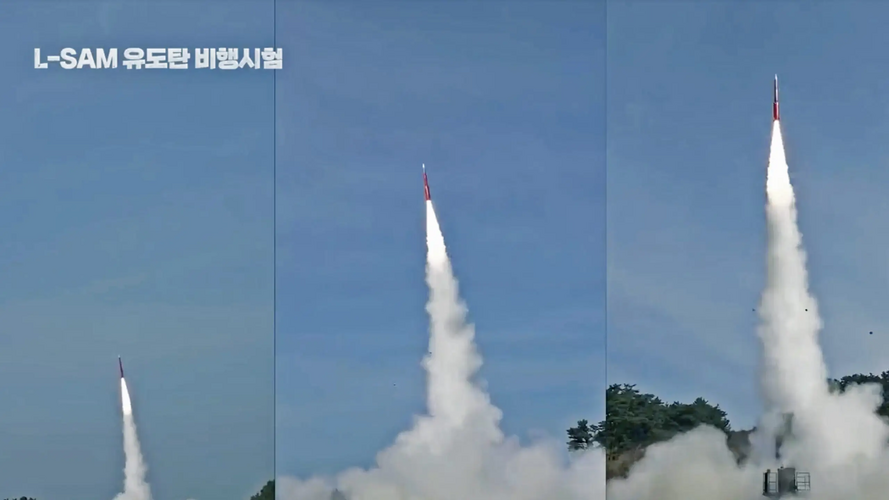
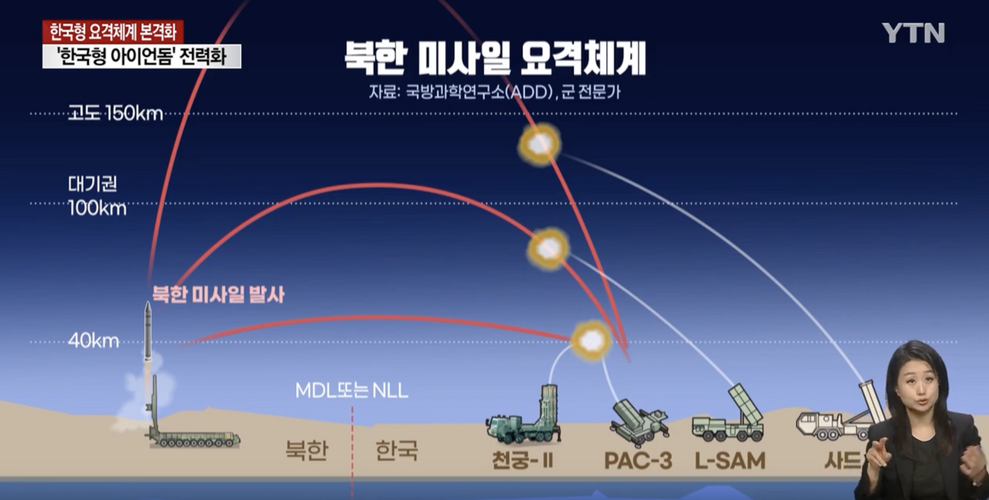
- Joined
- 9 October 2009
- Messages
- 21,147
- Reaction score
- 12,247

South Korea expedites efforts to establish Iron Dome-style air defense system
SEOUL — The administration of South Korean President Yoon Suk-yeol is expediting efforts to develop an advanced air defense system to counter North Korean rocket launches.
Well, there are two separate missile variants for the system, one being the AAM and one ABM. Neither of them looks even remotely close to the SM-1. Foto on post #6 is from the test fire footage of the ABM, and while the low-res deceives you a bit, it's a three staged vehicle that looks like this:The L-SAM looks like the bastard offspring of an SM-1 and a THAAD.
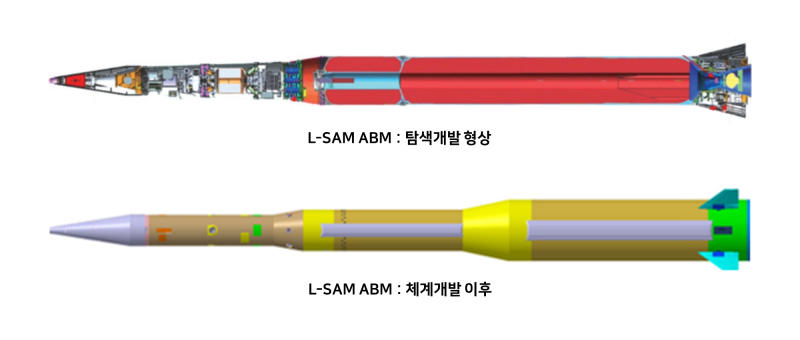
note - the above design is the model from the preliminary design phase, which was revamped and evolved into design below. Older design used a pulsed-rocket motor and had a flare design that resembles THAAD. Newer one looks like an Arrow-2 with an extra stage and since it uses a staged booster, it probably no longer has a pulsed-motor.
The AAM looks rather like PAC-2 GEM. Not much is known about it other than it is dual-pulsed. There are naval variants of both the AAM and ABM in development, named "Ship-to-Air Missile-II". -I is the designation of K-SAAM which has replaced RAM on newer ROKN ships. There's not much known about the naval variant of the ABM but the AAM looks like a PAC-2 with SM-6 booster strapped on it.
Last edited:
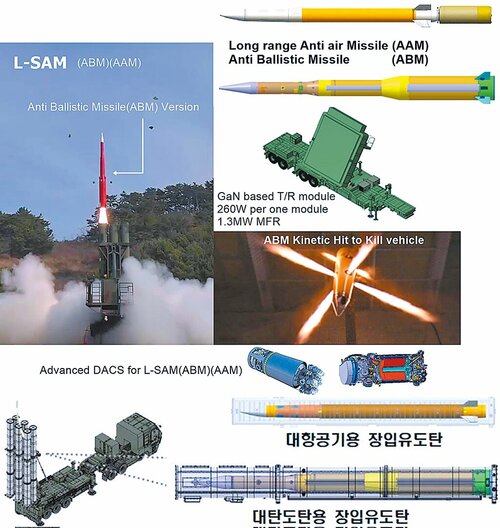
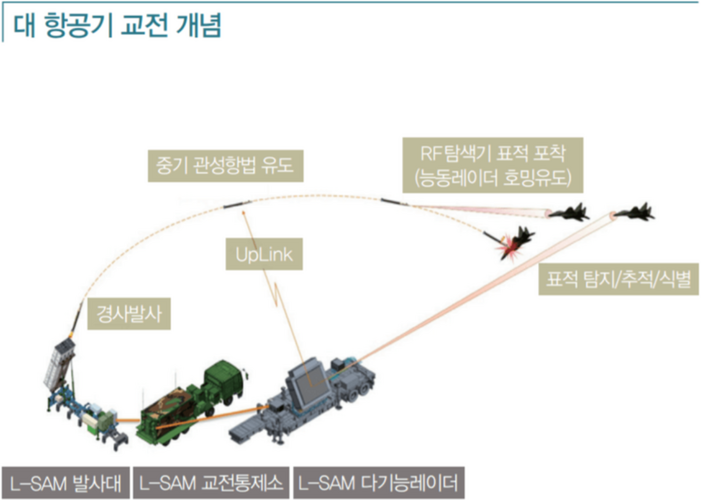
L-SAM AA engagement
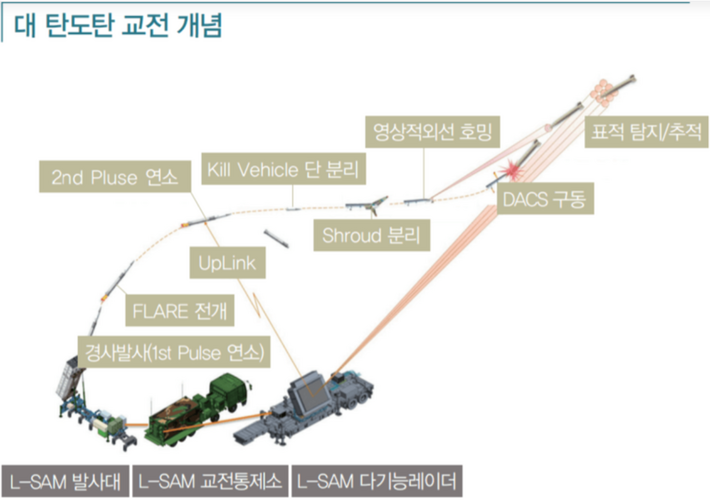
L-SAM ABM engagement. Note that this infographic is from the preliminary design phase.
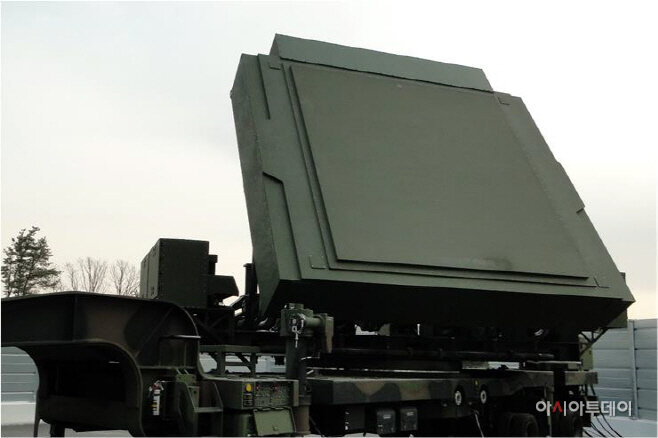
prototype of the L-SAM MFR designed and manufactured during the preliminary design phase. A more detailed photo of the prototype under test exists (https://cdn.maily.so/9600y0rtsjrlhgej6x8ywj1ah3ls), but I'm posting the link since the op doesn't want it redistributed.
Last edited:
Forest Green
ACCESS: Above Top Secret
- Joined
- 11 June 2019
- Messages
- 7,831
- Reaction score
- 13,218
I've seen other drawings.View attachment 688137
View attachment 688138
L-SAM AA engagement
View attachment 688139
L-SAM ABM engagement. Note that this infographic is from the preliminary design phase.
View attachment 688141
prototype of the L-SAM MFR designed and manufactured during the preliminary design phase. A more detailed photo of the prototype under test exists (https://cdn.maily.so/9600y0rtsjrlhgej6x8ywj1ah3ls), but I'm posting the link since the op doesn't want it redistributed.
South Korea tests indigenous long-range surface-to-air missile
South Korea's Defense Acquisition Program Administration (DAPA) has confirmed to Janes that it has test-launched the country's indigenously developed long-range...
www.janes.com
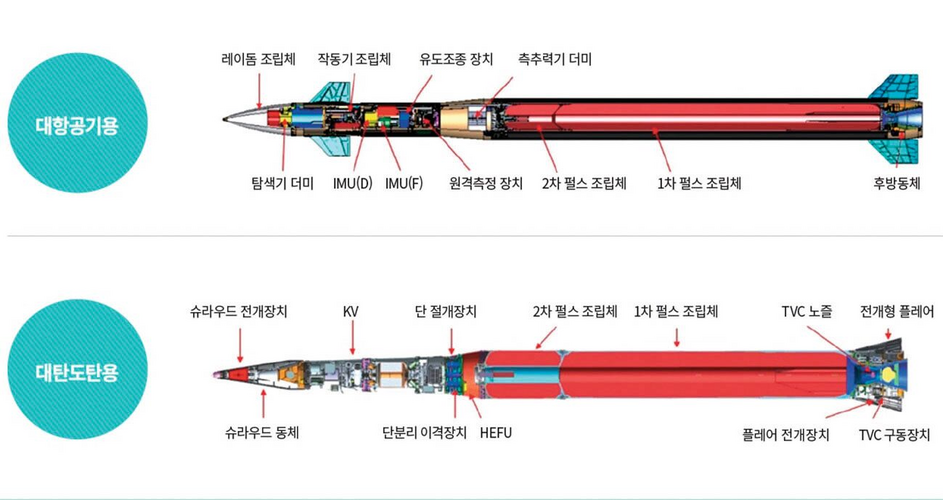
South Korea tests indigenous long-range surface-to-air missile
South Korea's Defense Acquisition Program Administration (DAPA) has confirmed to Janes that it has test-launched the country's indigenously developed long-range...
www.janes.com
Yeah, like I've said, those are the models from the preliminary design phase. See post #9 again and you'll notice they are the same models. On the graphic from that Janes article, the missile above is the AAM and the one below is ABM. As noted on post #9 there were substantial design changes to the ABM alongside some design changes to the AAM, most notably the removal of canards.I've seen other drawings.View attachment 688137
View attachment 688138
L-SAM AA engagement
View attachment 688139
L-SAM ABM engagement. Note that this infographic is from the preliminary design phase.
View attachment 688141
prototype of the L-SAM MFR designed and manufactured during the preliminary design phase. A more detailed photo of the prototype under test exists (https://cdn.maily.so/9600y0rtsjrlhgej6x8ywj1ah3ls), but I'm posting the link since the op doesn't want it redistributed.
South Korea tests indigenous long-range surface-to-air missile
South Korea's Defense Acquisition Program Administration (DAPA) has confirmed to Janes that it has test-launched the country's indigenously developed long-range...www.janes.com
View attachment 688146
South Korea tests indigenous long-range surface-to-air missile
South Korea's Defense Acquisition Program Administration (DAPA) has confirmed to Janes that it has test-launched the country's indigenously developed long-range...www.janes.com
Last edited:
Exactly. More to be specific, Arrow-2 with an additional stage and a KV that resembles that of THAAD.So the ABM variant now in testing resembles a three-stage Arrow 2?
Forest Green
ACCESS: Above Top Secret
- Joined
- 11 June 2019
- Messages
- 7,831
- Reaction score
- 13,218
In the photo it seems to have gained small fins above the first stage too.Yeah, like I've said, those are the models from the preliminary design phase. See post #9 again and you'll notice they are the same models. On the graphic from that Janes article, the missile above is the AAM and the one below is ABM. As noted on post #9 there were substantial design changes to the ABM alongside some design changes to the AAM, most notably the removal of canards.
Any word on dimensions?
The aforementioned Ship-to-Air Missile-II is like I've said based on L-SAM AAM and will be launched from KVLS. KVLS has almost identical dimensions to the Mk.41 Strike Module and for that I'd say it's safe to assume it will have similar size to SM-6.In the photo it seems to have gained small fins above the first stage too.
Any word on dimensions?
As for the ABM, not much is known other than it is bigger than the AAM. The graphic in post #10 could give you a hint, although I'm not sure if it is to scale (it seems to be).
This time they released the video of successful ABM interception test. L-SAM is set for completion by next year. With the completion of L-SAM, RoK would have its own layered IAMD of L-SAM, PAC-3 and KM-SAM block II. On top of that, the southern regions are covered by USFK THAAD battery, primarily tasked for the defence of Busan where the US forces and materials will be reinforced through in case of a war.
Currently further ABM capabilities are in development in form of L-SAM II, KM-SAM block III, LAMD and LAMD-II. The former two have entered system development in 23rd of April this year and will be completed by 2034 and 35 respectively, and the latter are under preliminary development phase in which test interceptor has been designed based on K-SAAM, alongside multiple launcher and a AESA radar to test the underlying technologies.
LAMD and LMAD-II are a result of preliminary study concerning future SoKor C-RAM capabilities for metropoliatan areas, in which it was concluded that Iron Dome, primarily developed against smalled diameter RAM, cannot handle the threat situation SoKor is facing, which mainly consists of large diameter rockets and missiles aimed towards Seoul metropolitan area and nearby proudction hubs. LAMD and -II are therefore aimed to be able to intercept saturation attacks of MRLs of <400mm diameter and <600mm diameter class more cost effectively compared to KM-SAM and PAC-3.
L-SAM II ABM is aimed to be able to intercept ballistic missiles at three times the altitude of L-SAM, whereas the AAM variant is aimed to have GPI capability. KM-SAM block III is aimed to have capability exceeding that of PAC-3 MSE with LTAMDS and just like MSE with LTAMDS, aims to be able to intercept HCMs.
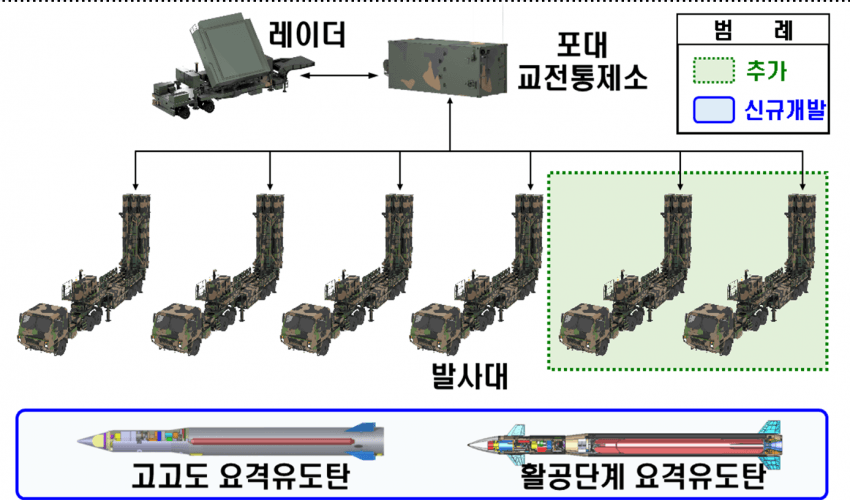
L-SAM-II.
Effector to the right is GPI and to the left is high-altitude interceptor. Radar itself looks very similar to current L-SAM radar.
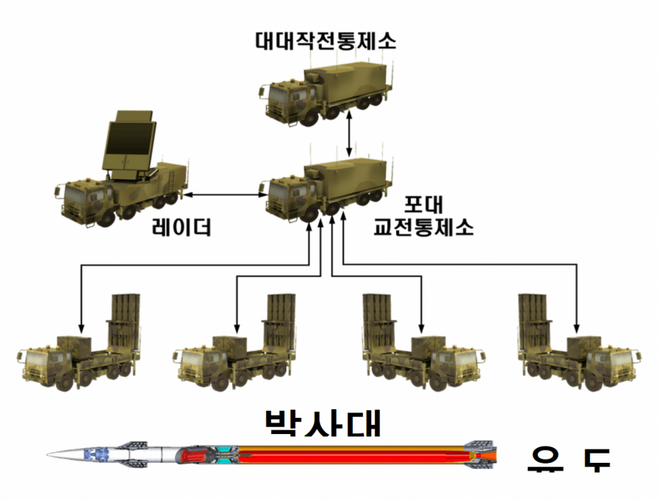
M-SAM block III.
Biggest difference is the new AESA MFR.
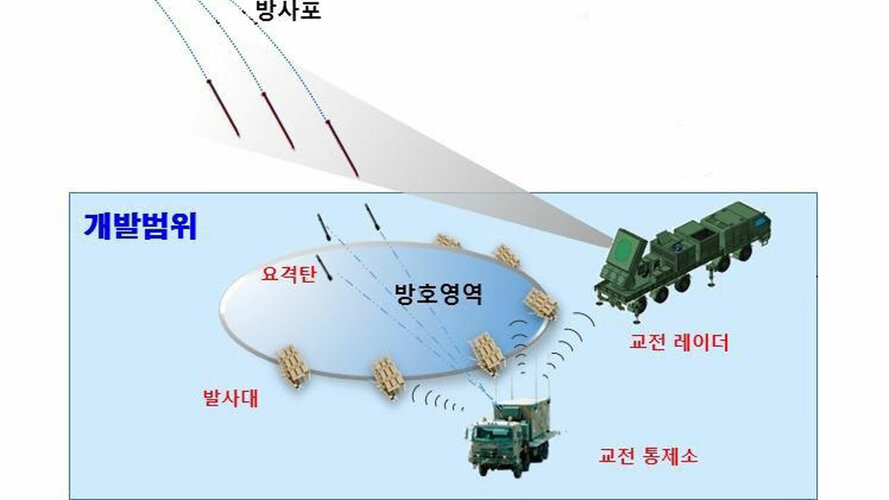
LAMD schematics with the radar.
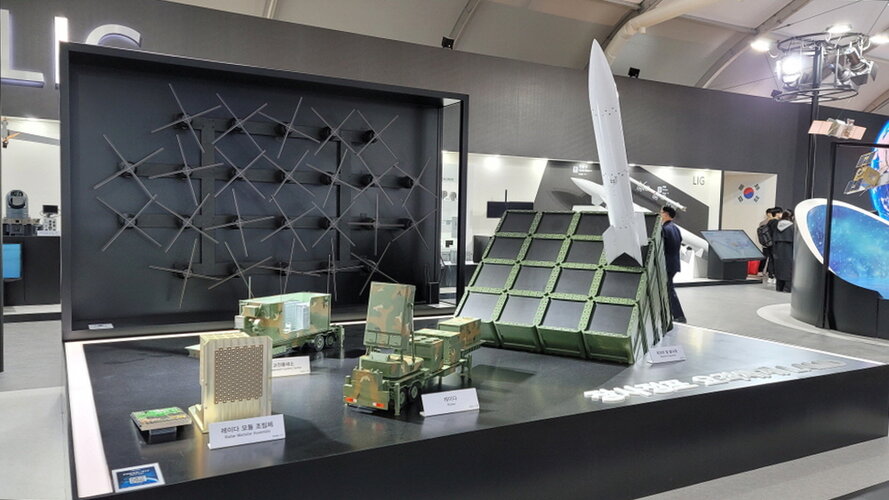
LAMD battery components.
LAMD preliminary development prototype battery.
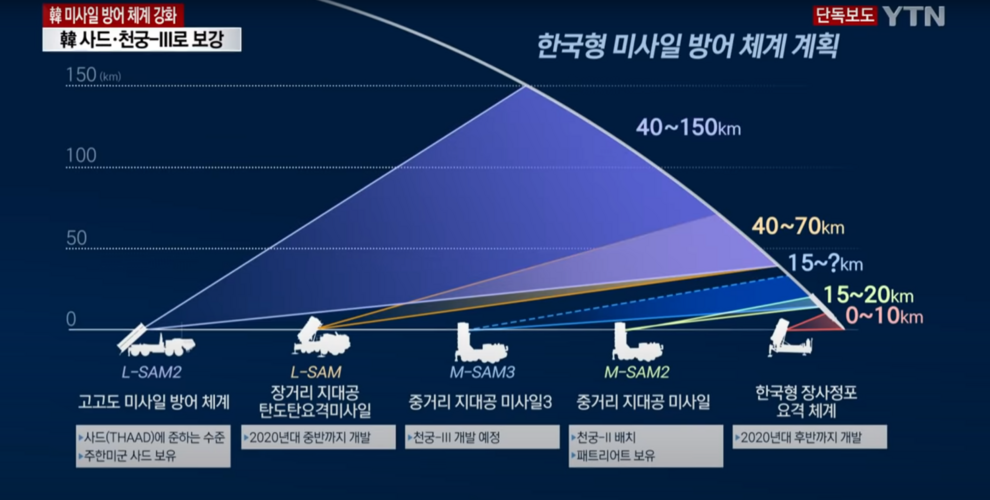 Korean layered BMD plan for mid 2030s.
Korean layered BMD plan for mid 2030s.l-sam kv hover test footage from last year
Forest Green
ACCESS: Above Top Secret
- Joined
- 11 June 2019
- Messages
- 7,831
- Reaction score
- 13,218
Scott Kenny
ACCESS: Above Top Secret
- Joined
- 15 May 2023
- Messages
- 8,728
- Reaction score
- 9,578
I think that's exactly what it's supposed to be, just not the US THAAD system so China has no room to complain about the "threat" to them.That section drawing makes me think of a THAAD-ER.
Forest Green
ACCESS: Above Top Secret
- Joined
- 11 June 2019
- Messages
- 7,831
- Reaction score
- 13,218
View: https://twitter.com/mason_8718/status/1693569458370175364?s=20


Hanwha and LIG Nex1SAM radar family. Also the FFG-III and KDDX and KF-21 radar share it's radar module or elements.
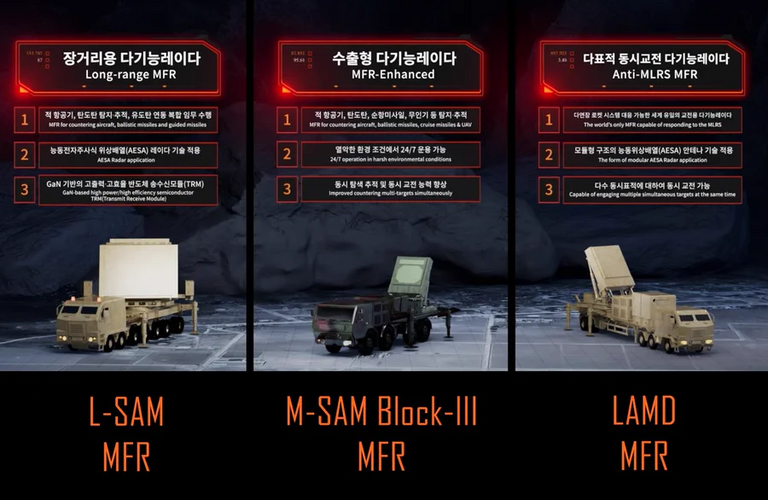
LAMD-I interceptor is basically small, cheap version of the SAAM-I.
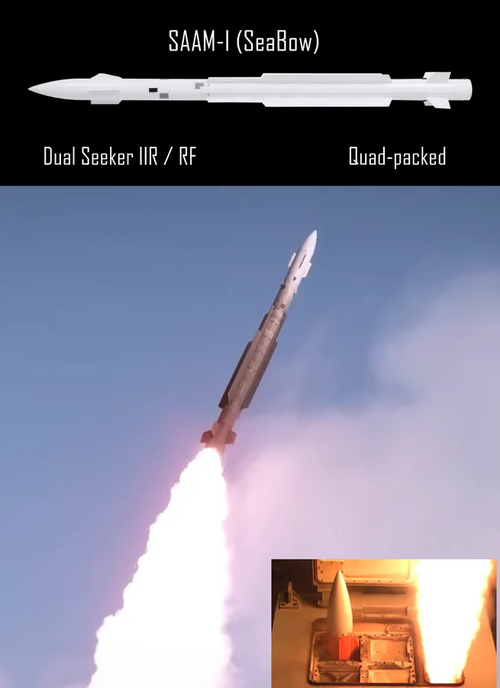
Forest Green
ACCESS: Above Top Secret
- Joined
- 11 June 2019
- Messages
- 7,831
- Reaction score
- 13,218
Forest Green
ACCESS: Above Top Secret
- Joined
- 11 June 2019
- Messages
- 7,831
- Reaction score
- 13,218
~15km KAMD(anti rocket)
15~40km KM-SAM I/II40~60km
L-SAM(should be BMD version)60~100km
L-SAM II(should be BMD version)
View: https://twitter.com/W_ChiefGunner/status/1706593446507462773
15~40km KM-SAM I/II40~60km
L-SAM(should be BMD version)60~100km
L-SAM II(should be BMD version)
View: https://twitter.com/W_ChiefGunner/status/1706593446507462773
Similar threads
-
-
South Korea successfully conducts third test flight of solid-fuel space rocket
- Started by Flyaway
- Replies: 0
-
-
-

